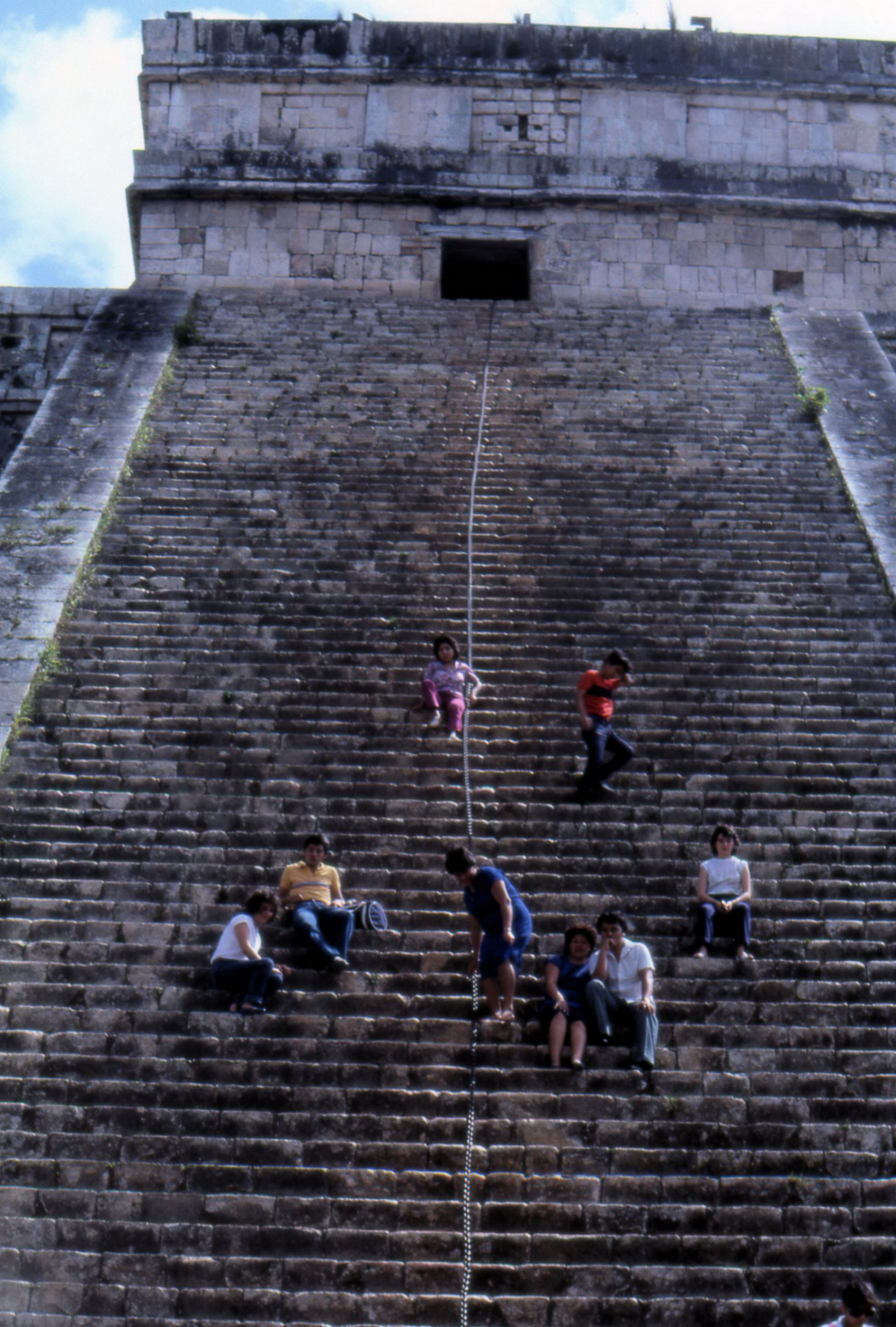The Temple of Kukulkan in Chichen Itza, Mexico, is renowned for its magnificent and awe-inspiring epic staircase, often referred to as “El Castillo.” This iconic Mayan pyramid stands as a testament to the architectural brilliance and mathematical precision of the ancient civilization.

The staircase of the Temple of Kukulkan is a masterpiece of design and symbolism. It consists of 91 steps on each of the four sides, totaling 364 steps, with the platform on top serving as the final step. When combined with the top platform, which represents the temple’s summit, the total number of steps reaches 365, reflecting the days in the solar year.
During the spring and autumn equinoxes, a remarkable phenomenon occurs on the staircase. As the sun sets, shadows cast by the edges of the steps create the illusion of a slithering serpent descending the pyramid’s northern side. This awe-inspiring spectacle is a testament to the Mayans’ deep understanding of astronomy and their ability to align their structures with celestial events.

Beyond its celestial significance, the epic staircase holds spiritual and religious implications. It is believed to represent the sacred journey to the heavens and the ascent of Kukulkan, the feathered serpent deity associated with wisdom, fertility, and rain. Ascending the steps was a ritualistic act, symbolizing the seeker’s progress towards enlightenment and spiritual union with the divine.
The Temple of Kukulkan and its epic staircase continue to captivate visitors from around the world. Its architectural grandeur, combined with its rich symbolism and astronomical precision, showcases the ingenuity and cultural legacy of the Mayan civilization.

Today, the Temple of Kukulkan and its epic staircase stand as a UNESCO World Heritage Site and remain a testament to the enduring legacy of the Mayans. They serve as a reminder of the remarkable achievements of ancient civilizations and their profound understanding of the cosmos, inspiring awe and admiration for the marvels of human ingenuity and creativity.